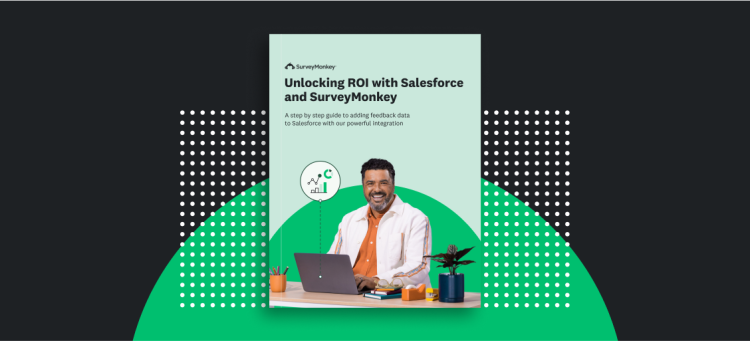So how do you set yourself apart from the crowd with content that supports your business goals? By using original research. According to a study we ran on SurveyMonkey Audience, 82% of people would rather read an article based on data than the writer’s opinion, and 74% of people consider content based on data to be more trustworthy.
We’ll demonstrate how original research can boost your content’s performance by reviewing 5 brands who’ve seen tons of value from using it in different ways—from improving their brand awareness to increasing their number of sales leads.
How has SurveyMonkey fueled your curiosity?
Tell us about a time you used feedback to drive growth and innovation for a chance to win $2,000!
Netflix earns free press by digging into a controversial use of their service
Choosing a strong research topic is a balancing act. You want it to be related to your brand, but you don’t want it to focus solely on your organization, as the resulting content can be boring and come off as salesy.
Perhaps no company does a better job of treading this delicate line than Netflix. Netflix surveyed tens of thousands of their users on SurveyMonkey Audience to find out whether or not people continue watching a show or movie without their significant other (assuming they started it together). Netflix aptly named this concept “cheating.”
Turns out, cheating is pervasive: nearly half (46%) of respondents admitted to doing it! Netflix also explored the issue by country, genre of entertainment, and even by show to uncover more interesting insights.
They promoted the findings in a press release and in a beautifully designed “scrollytelling” page. Soon after, the results went viral, with organizations like CNN, The Guardian, and GQ picking up the story.
Even Google recognized its significance, giving “Netflix cheating” a prominent sidebar in search.
Through their Audience research, Netflix subtly reminded us that their product is irresistible, and they created a mainstream point of discussion around its use. Talk about a savvy way to leverage survey data!
Drift collects quality leads from a timely, business-relevant report
Drift, the conversational marketing and sales platform, decided to study a topic that’s closely related to their business and relevant to their audience: how consumers and businesses interact.
They surveyed more than 1,000 consumers on SurveyMonkey Audience, and using the results, published a gated guide. They also picked a few of the key data points to drum up demand for downloading it.
The report highlights the results using charts (perfect for sharing on social media). Drift’s findings on the trendy topic of chatbots are unique and interesting, and the report implies that the research could have a trickle-down impact on any business with a digital presence—helping them create a sense of urgency.
Like Netflix, the research earned Drift free press, only this time from more targeted business publications like Small Business Trends and MediaPost. And one of the key takeaways from their research—that chatbots are a necessity for engaging customers—just so happens to align perfectly with Drift’s product offerings. This should help the company move prospects along the buying funnel.
Hubspot engages a key audience segment by providing consumer behavior insights
Hubspot, the inbound marketing, sales, and service software company, strives to create a high volume of useful content for a variety of professionals who work in those areas.
To help the marketing segment of their audience better account for the behavior of the consumers they’re trying to market, Hubspot decided to dig into how consumers engage with brands.
Hubspot surveyed more than 2,700 consumers across the world via SurveyMonkey Audience, and broke down each of the study’s key findings into separate sections of a blog post. These include how consumers share information about brands, what drives consumer trust, and where people discover new products and services.
Aside from sharing compelling—and genuinely useful— findings, they also use the page to promote relevant content, like their Marketing Plan Generator.
This type of highly valuable, actionable content is a major part of what’s given Hubspot such a strong reputation as a resource for marketers. It’s also given them a perfect platform to guide users to other content that moves them along their journey as a prospect or customer.
Master the art of using surveys to create original content
Lean how to write content that earns you media coverage, site traffic, business leads, and more!
Vengage raises its thought leadership status by sharing invaluable data
Vengage, an infographics tool, wanted to educate its audience about a topic that’s tangentially related to its business: logo design.
They used SurveyMonkey Audience to ask over 1,000 adults about ads from 6 imaginary companies, each belonging to a different industry. For each industry, they zeroed in on what consumers want most in a logo, including the colors that work best, the desired appearance of text and icons, and the less tangible qualities that help make it trustworthy.
They took their learnings and organized them in an infographic on their blog.
See what they did there? They found a non-salesy, effective way to promote their infographic builder!
The post empowers Vengage users and prospective users to develop even more impactful logos. Helpful content like this ensures that their target audience of designers (and those in related fields) come back for more. It might even mean that they’ll pick Vengage when they need an infographics tool.
Bonusly helps HR pros better understand the value of a tool like theirs
Whereas Vengage wanted to provide insights on a topic that’s similar to their business, Bonusly (a software company that enables employees to reward each other with micro-bonuses) wanted to explore a topic that is at the core of its business: employee recognition.
The results would help them educate their target audience of HR professionals on things like:
- The different types of recognition
- Why employee appreciation is critical
- The state of appreciation at work
- Where opportunities for recognition lie
Using the responses of 1,500 working adults from SurveyMonkey Audience, they put together a comprehensive blog post that features responses from employees of all backgrounds. Its data illustrate the need for organizations to develop recognition programs, and guides readers on how they can go about creating one (Hint: Bonusly can help).
How could your company use original research? Your answer could help you write viral content that offers valuable takeaways to your readers and helps grow your business.



